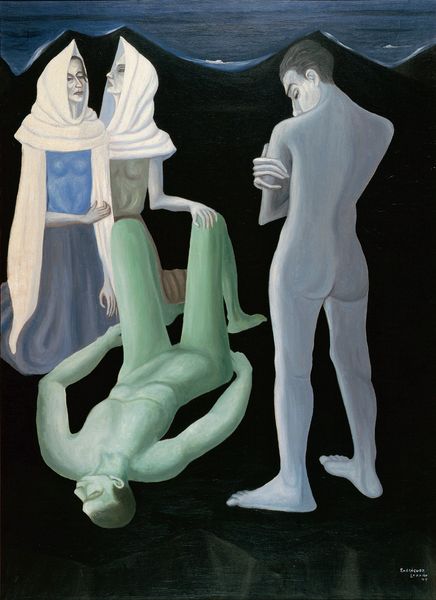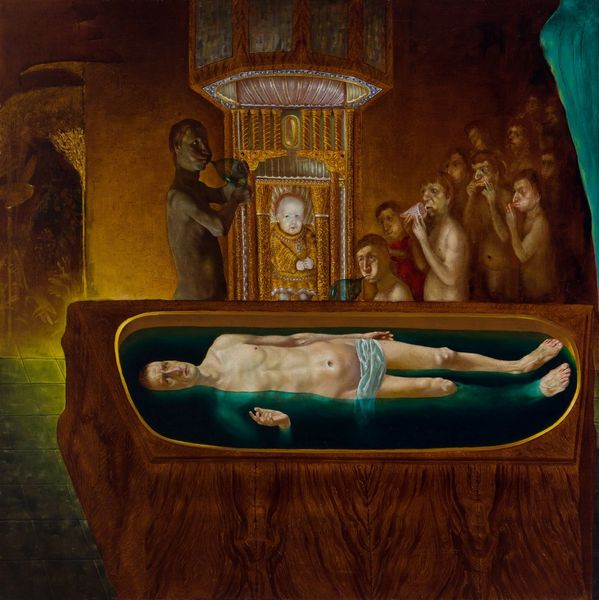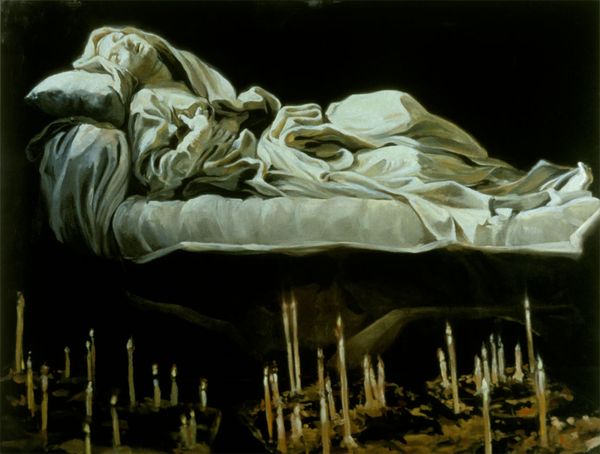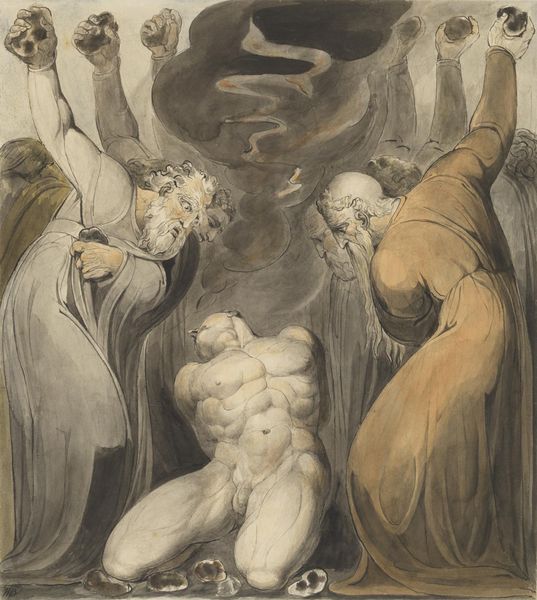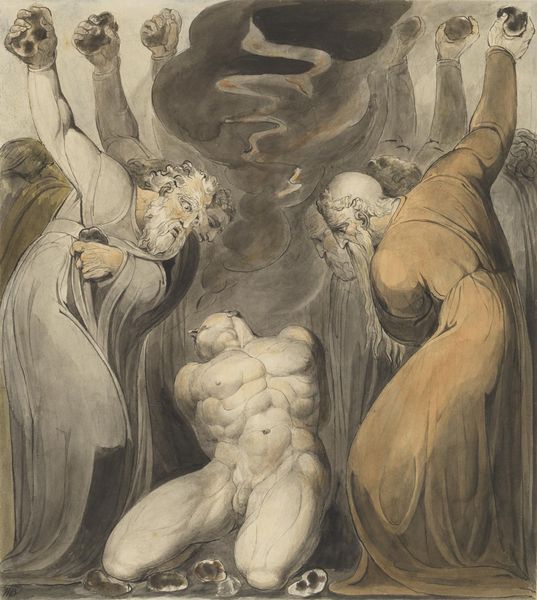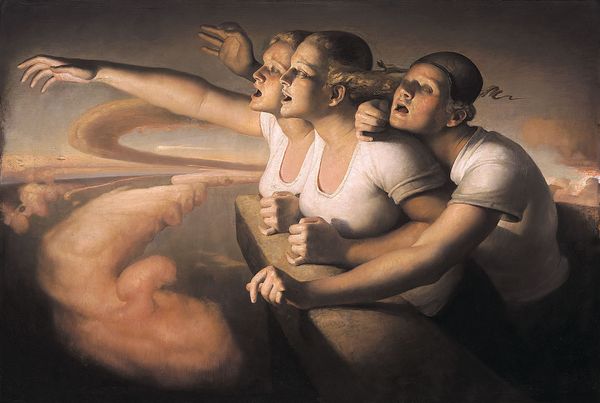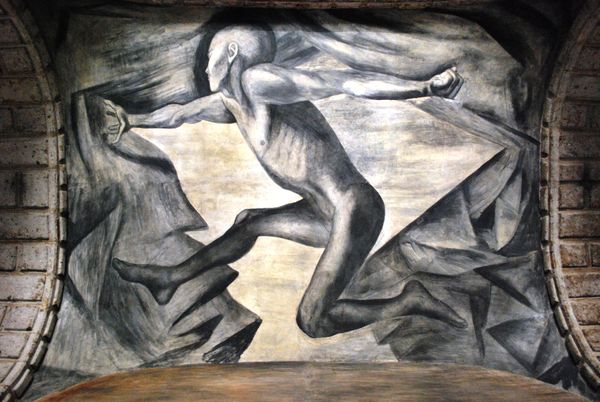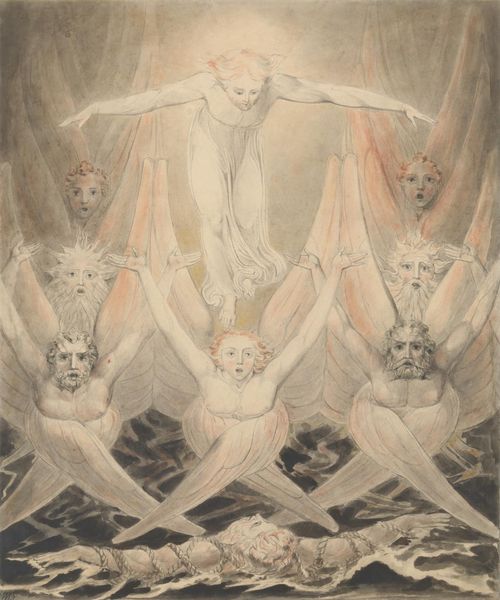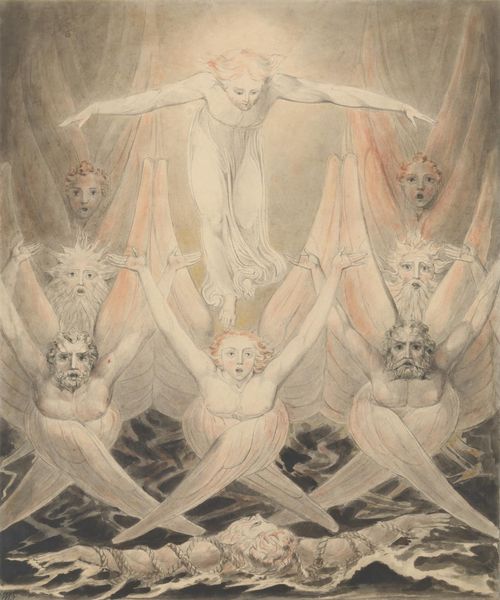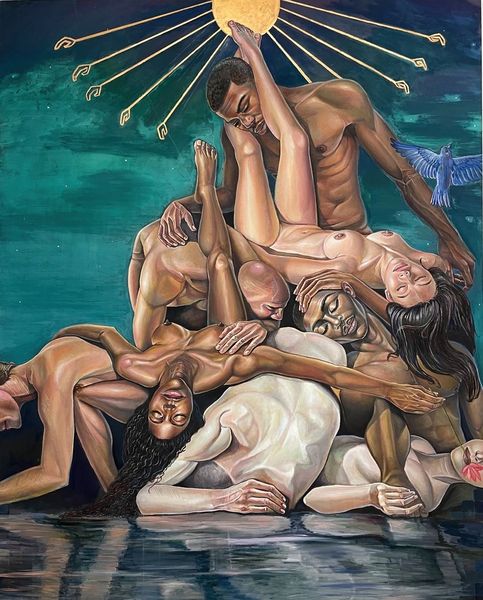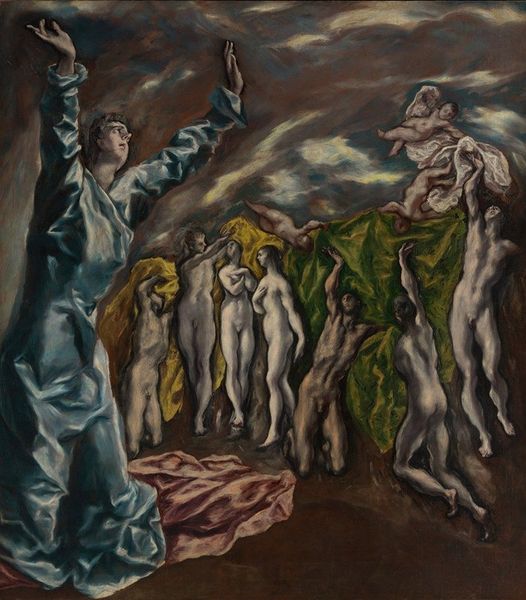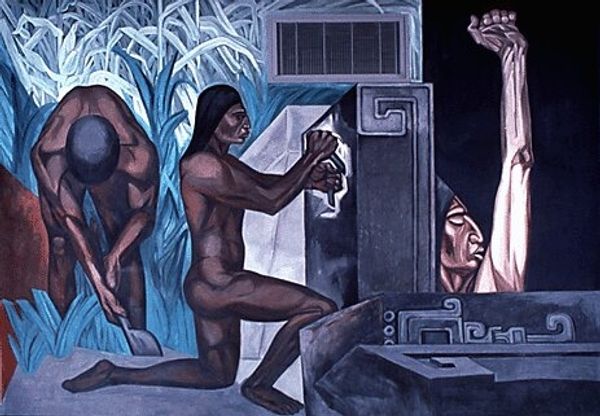
Dimensions: 123.5 x 178 cm
Copyright: Manuel Rodríguez Lozano,Fair Use
Curator: This painting by Manuel Rodríguez Lozano, created in 1944, is titled "The Holocaust." It's a powerful piece rendered in oil, currently residing at the Museo de Arte Moderno in Mexico City. Editor: Immediately, I'm struck by the haunting pallor of the figures and their supplicating postures. It feels as though I'm witnessing a ritual, or perhaps a desperate plea. Curator: Absolutely. Note the central positioning of the arch, framing empty space, it evokes absence. Consider how Lozano uses that stark, vacant space as a symbol for immeasurable loss, resonating with the profound destruction enacted during the Holocaust. Editor: The elongated figures, reaching, straining...there's an undeniable expressionist influence here, channeling the emotional turmoil. But also the ways those blues and whites evoke iconic representations of the Virgin Mary mourning the dead Christ. I feel as though Lozano is drawing parallels to other devastating histories of suffering and sacrifice. Curator: A very perceptive point! The repeated motif of veiled figures, they symbolize mourning but also signal how grief is often communal and culturally patterned. There is definitely shared visual and iconographic heritage invoked here. It is powerful. Editor: I am curious though... Is Lozano trying to universalize the Holocaust's pain or, potentially, overshadow the specifics of Jewish suffering with a broader sense of grief? It is important to be reflexive about how we view such potent imagery and recognize whose voices, which stories, get represented – and possibly muted – by art. Curator: That’s a valid provocation. As a Mexican artist reflecting on global events, Lozano may have aimed to connect this specific tragedy with shared experiences of colonialism, oppression, and displacement across Latin America. He is trying to process a world trauma that he only can access through a specific visual lens. Editor: The angularity and contorted gestures serve not only as expressionist tropes, but I would even go as far as to interpret this from an intersectional perspective. This work feels inherently like a reflection of intergenerational trauma and calls for an ethical looking and empathetic thinking on behalf of the viewer. Curator: Indeed. By layering symbols of mourning and sacrifice across cultures, Lozano makes "The Holocaust" a lasting symbol of our collective responsibility to remember and act. Editor: It also compels us, even now, to relentlessly question how representation, memory, and social action intertwine when we confront atrocity. It serves as a starting point to do that important intersectional, critical thinking.
Comments
No comments
Be the first to comment and join the conversation on the ultimate creative platform.
